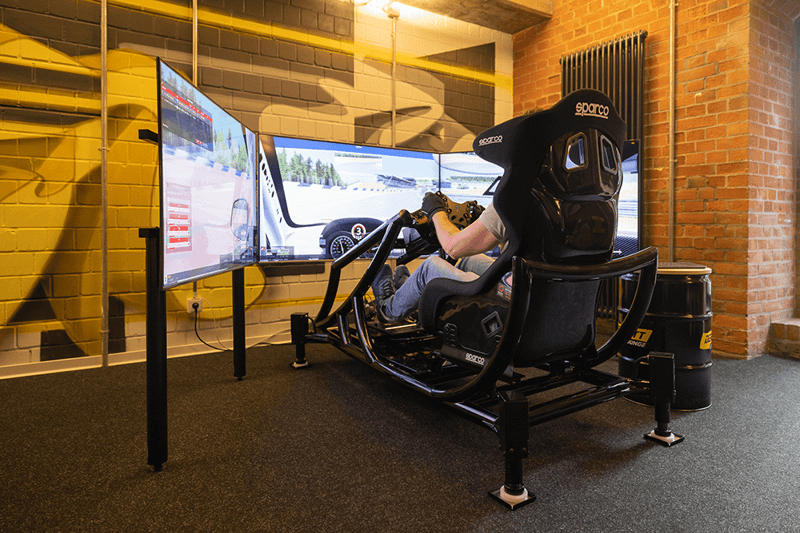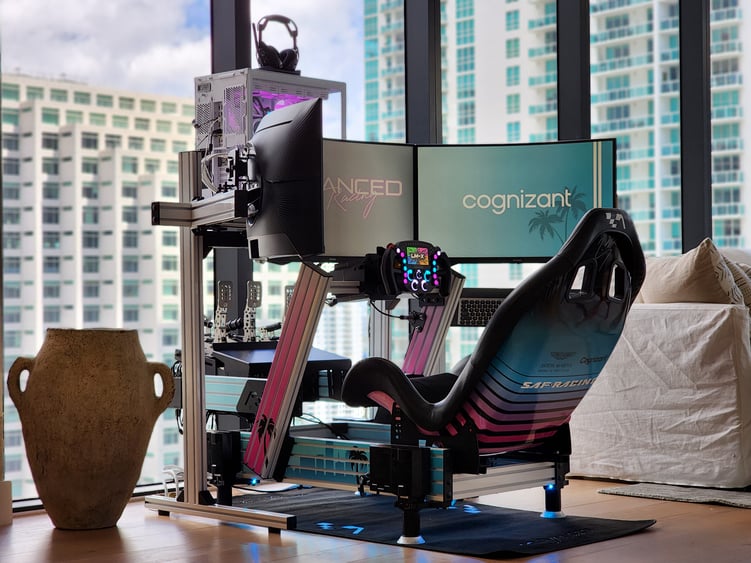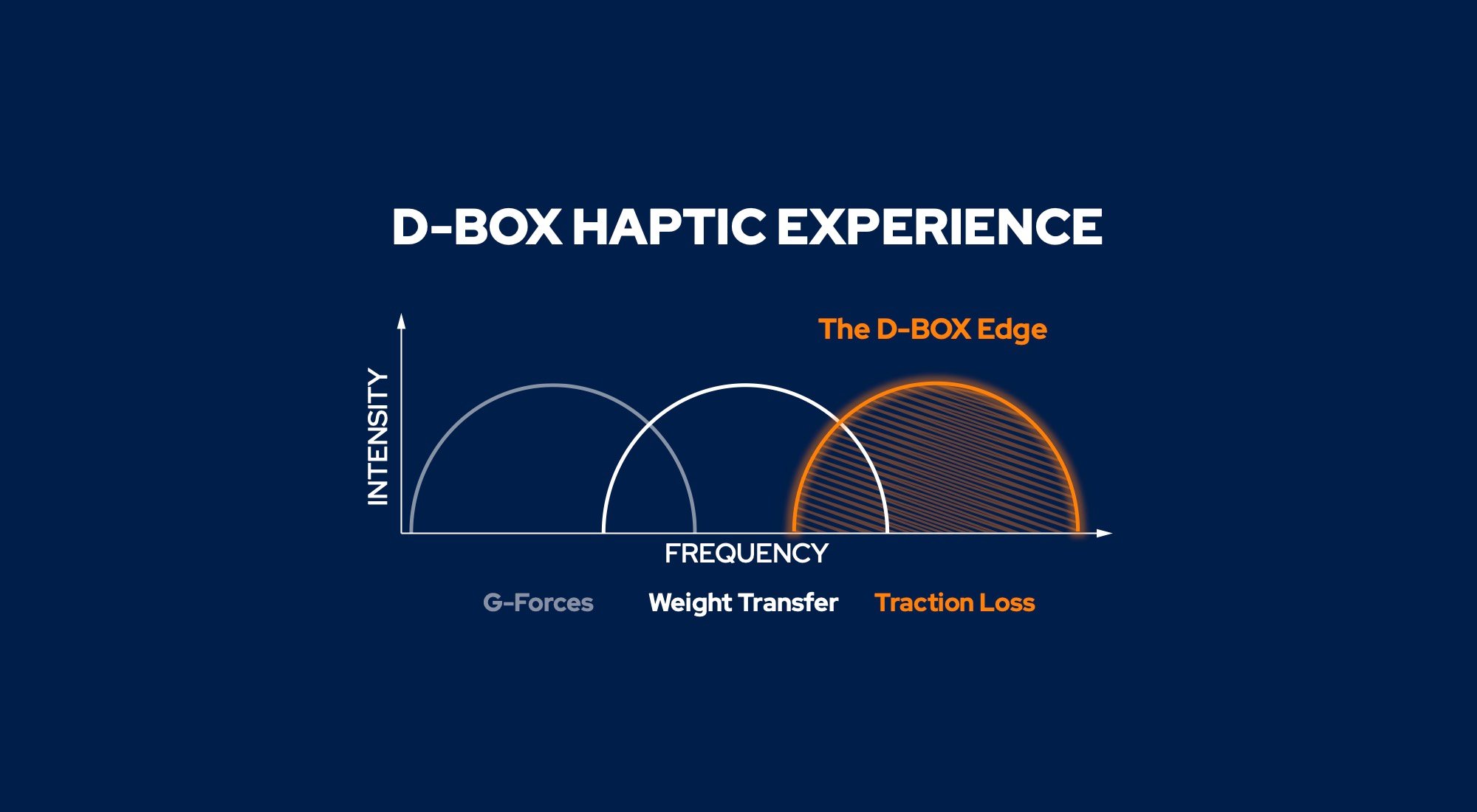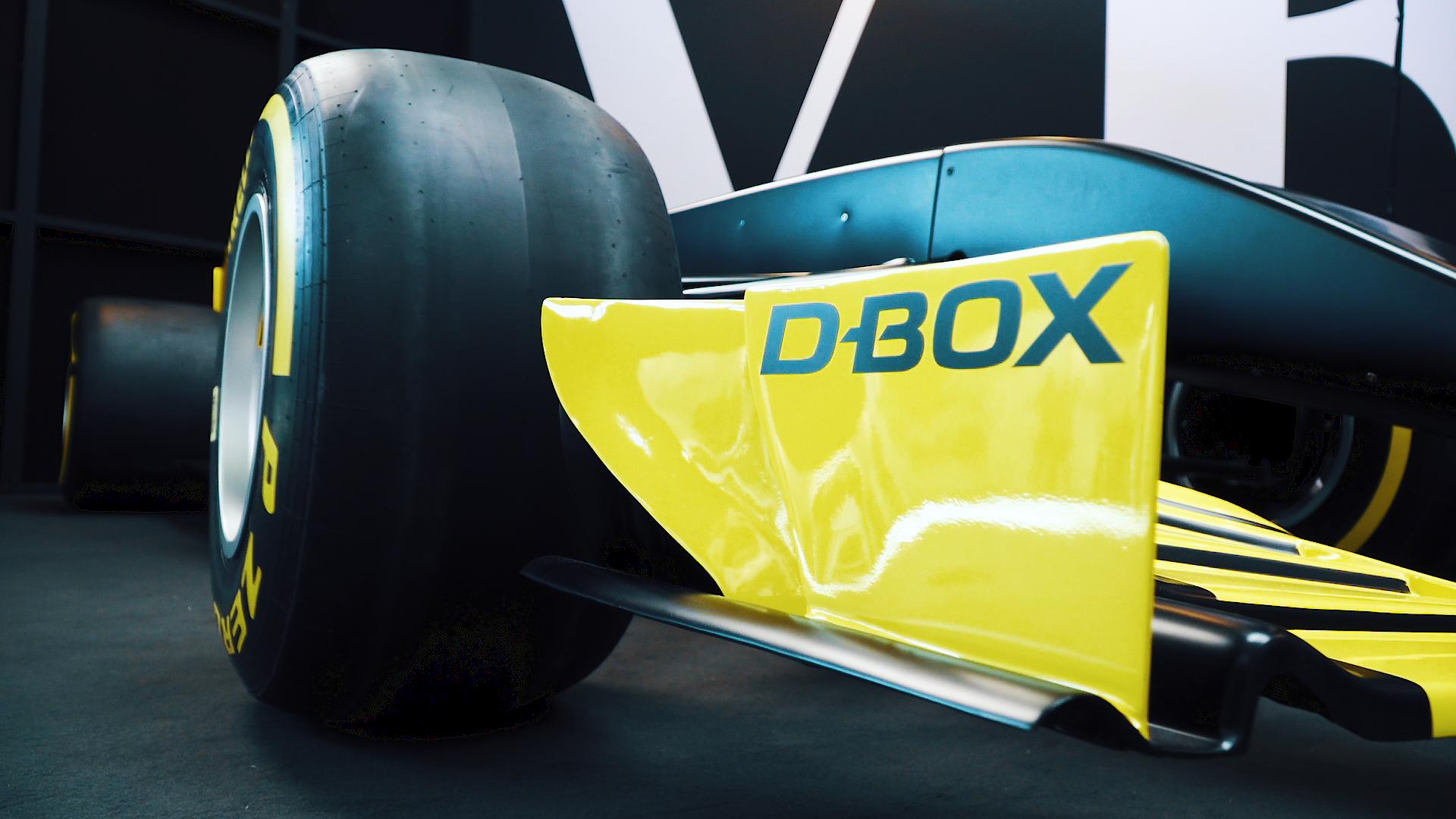
Three Biggest Myths About Haptics in Sim Racing in 2024
With the information overload, it’s easy to lose sight of what is or isn’t accurate. As a result, you may end up struggling to decide what features are best fit for your own rig.
One of the things you’ll inevitably have to decide upon for your rig is whether you want to incorporate haptic feedback. As haptics gain traction and popularity in the sim racing community, it can be difficult to find accurate information and to separate assumptions from fact.
For this reason, we’re going to bust the three biggest myths about haptic technology in sim racing!
Myth 1: Haptic technology can only communicate the movements of the car

When most people think of a haptic sim racing rig, they’re likely envisioning something that solely replicates g-forces: meaning it only makes very large movements to exert the force required.
This type of rig would only be able to communicate the direction and the movements of the car—which is not necessarily a better or even pleasant experience.
While a haptic sim racing rig does communicate movement and direction, it’s far from the only useful feedback it can produce!
A high-quality sim racing haptic system will create a strong degree of symbiosis between man and machine, allowing driver and car to become one. This allows the driver to extract every ounce of performance from the vehicle, just as they would expect to do behind the wheel of a real race car!
For a rig to provide this level of symbiosis, a lot of minute yet crucially important cues must be communicated to the driver through haptic feedback—it can’t rely on mirroring the movements of the vehicle alone. It is these subtle yet precise cues that come together to fully immerse sim racers into their sport.
While the extent of what haptic feedback can communicate will vary depending on the rig and setup, there are a few key features that can enhance your overall sim racing experience.
For example, through a combination of movements, vibrations and textures, high fidelity haptic feedback allows drivers to recognize, with time and practice, when their vehicle is on the edge of losing traction to the road. The combination of these three types of feedback allows drivers to understand a car’s grip level limits in a way that was only before possible in real racing.
D-BOX’s haptic system is mounted at each corner of the rig, giving each tire the ability to be stimulated individually and allowing the driver to understand exactly where and when tire slip is occurring so that they can re-gain control of their vehicle. This level of precision can only be represented through high-frequency haptic feedback, and not through audio or visual cues.
Haptic feedback can also communicate the texture of the track or terrain: if there are bumps, rocks or other irregularities on the track, a good haptic system will be able to replicate the high frequencies necessary to allow you to feel them all— so that you can adjust your driving for future races and laps.
It is not just the movements of the chassis that will improve your racing experience— it is the subtle and granular feedback given in these examples that come together to give you information not only about the vehicle you’re driving, but also about the environment, the weather, the track conditions and more.
Myth 2: All haptic feedback in sim racing is rough, jerky and unrealistic

If you’ve never tried a sim racing rig before, you might imagine the experience would be similar to how you play Mario Kart: you spin the wheel at the last second and make an impossibly sharp turn, except that this time you can physically feel your car drifting thanks to the haptic feedback.
Sim racing is nothing like a good game of Mario Kart, no matter how fun Mario Kart may be. A good sim racing rig will provide rough and jerky feedback only if the context requires it (such as in demanding sports such as rally, or if you decide you want to channel your inner Mario) but it is not the norm. As previously stated, it’s subtle haptic feedback that translates into precise cues for an enhanced sim racing experience—not unrealistically intense feedback. Realism is the name of the game!
Scientifically speaking, it’s the mix of both high and low frequencies that provide this subtle and realistic feedback. The combination of the two together stimulates the skin and muscles of the entire body, providing ultra-realistic feedback that you wouldn’t expect to feel in a simulated situation.
For example, haptic feedback will provide you with cues if you’re oversteering or understeering— something that can’t be communicated alone through rough & sudden movement. Haptics can also communicate to the body when a vehicle is accelerating or when it’s slowing down— the driver’s muscles will become more or less engaged depending on the circumstance, without the chassis moving very much at all.
If you were to ask any professional driver with sim racing experience, they’ll all tell you the same thing: big and impressive movements may be fun, but they are not what make you improve— in some cases, they can even make you a worse driver if they are not properly calibrated.
Anthony Alfredo, a NASCAR XFINITY SERIES driver believes that his D-BOX haptic system accurately represents the subtle cues you feel in a race car like the tires, suspension and chassis movement.
“This is crucial for any user, especially a real-life driver like myself using it as a training tool,” he explained.
Treyton Lapcevich, driver of the number 20 car in the NASCAR PINTY SERIES, also believes in the power of haptics.
“With haptics, it’s like nothing else. As a real-life driver, you use the simulator to prepare for tracks that you’re going to do in real life,” he explained. “With haptics you can feel every little bump and every groove in the track. It’s a lot more advantageous when preparing for real life events.”
Being able to feel the subtle cues haptic feedback provides sim racers a competitive edge as they become aware of any issues or obstacles before the game can provide audio or visual cues.
Myth 3: Haptic feedback can only be felt through the chair or seat

While the most obvious place to feel haptic feedback is through the seat of a rig, it is far from the only place haptic feedback can communicate with you.
The most immersive and realistic rigs will communicate not only through the seat, but also through the wheels, pedals and more!
Think of driving your real car— if you have a recent model with lane assist built-in and you veer out of your lane, the vibration in your wheel will alert you to this fact. This is an example of haptic feedback communicating to you through the steering wheel, and the same concept translates directly into sim racing— if you go off-track, haptic technology will alert you to this through your steering wheel.
The steering wheel can also provide you with realistic force feedback. This means that if you crash into a wall going 300km/h, the wheel will push back against you, and you’ll feel the crash sensations very clearly through your hands. The same concept applies when you take a steep turn—you’ll feel the resistance in the steering wheel!
Similarly, it’s also possible to feel force feedback and vibration in brake pedals. This gives drivers improved realism and immersion, allowing you to feel subtle cues that indicate brake evolution and behavior as the race goes on.
Having haptic feedback in places other than the seat itself allows you to control the car more efficiently, giving you a better chance of making the most of what your specific vehicle can do!
Haptic feedback: more than movement
Incorporating haptic feedback in your sim racing rig is a big decision to make and there’s a lot of information out there about the haptic experience and whether it’s worth the extra expense.
The truth is that while haptic feedback incorporates movement, it’s so much more than just a moving rig: it communicates the most subtle cues to drivers before an audio or visual cue from the game will alert the driver to the issue, allowing them to set the best course and to push their vehicle to its absolute limits.

